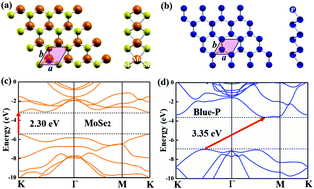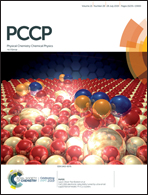Enhancing electronic and optical properties of monolayer MoSe2via a MoSe2/blue phosphorene heterobilayer†
Abstract
Type-II heterostructures are appealing for application in optoelectronics due to their effective separation of photogenerated charge carriers. Based on density functional and many-body perturbation theories, we investigate the MoSe2/blue phosphorene (MoSe2/Blue-P) heterobilayer with three representative stacking configurations. Our calculations indicate that the AA-stacking structure has more thermodynamic and dynamic stability. And it possesses a type-II band alignment with significant band offsets. The band offsets together with an interlayer polarized field will efficiently separate the photogenerated holes and electrons. More interestingly, compared with the MoSe2 monolayer, the MoSe2/Blue-P heterobilayer exhibits a significant enhancement of optical absorption in the range of near-ultraviolet and visible light. Also, the observed interlayer exciton has an impressive binding energy (∼670 meV), suggesting that the radiative recombination can be suppressed by the formation of an interlayer exciton. The predicted maximum energy conversion efficiency of MoSe2/Blue-P can achieve a value as large as 14.3%. These prominent electronic and optical properties provide the MoSe2/Blue-P heterobilayer with great potential in optoelectronics.



 Please wait while we load your content...
Please wait while we load your content...